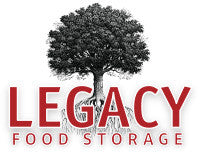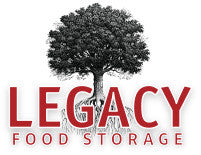
It’s important to have an alternate means to heat food and boil water in case access to gas and electricity are interrupted or scarce due to an emergency or disaster. That means a backup stove is an important piece of equipment to have alongside any
survival kit.There are a couple of great camping stoves in my closet that could easily be pulled out and used any time I need a source for heat. But when thinking about a stove for emergency preparedness, consider what your expectations will be, how many people you’ll need to provide for, and the how and where you’ll be able to store the fuel.There are several options that are easy to use, lightweight, and very versatile. Here are the most common types, along with an improvised price scale.
Alcohol ($)Of all the stove options, alcohol is perhaps the easiest to use, but typically requires a little creativity and effort in creating the burner. This low intensity, low cost type of stove makes it possible to set up a system like this practically anywhere, and it can be fueled using denatured alcohol, grain alcohol or methyl. Always beware of the effects of toxicity when using this type of stove and these fuel types.
Gel ($$)Gel chafing fluid stoves typically have relatively low intensity and don’t tend to emit enough heat to boil water quickly, if at all. While good for warming foods and keeping them warm, most chafing dish stoves also don’t include a means to position a pot of pan over the burning unit. The canisters are not reusable once the fuel is gone.
Butane, Propane, Isobutene ($$$)From small backpacking style stoves with a single burner to multi burner camping units, liquefied gas stoves are simple to use and offer good control of the heat and flame. Temperatures are important to consider for both storage and use as extreme cold can cause the liquid to not burn, while extreme heat can cause pressure in the canister, making them dangerous.
Liquid Fuel ($$$)Similar to the butane canisters mentioned above, liquid gas stoves are efficient and easy to use, although the flame is more difficult to regulate with these units. Several brands make models of this design that will work using a variety of different fuel options, including white gas, kerosene, or jet/auto/diesel fuel. Fuel is extracted from aluminum bottles via the stove pump, and can be reused and refilled as necessary.
Wood ($$$$)Often large, often heavy, but with an undeniably permanent lifespan as long as there is availability of fuel like wood (or any thing else that burns for that matter). Although not a practical solution for many people, myself included, I do like the idea of setting up shop in a wall tent with a
stove like this--although I’d prefer to do it out of choice rather than necessity.
---Jared Matkin---Jared Matkin is a Salt Lake City based freelance writer and outdoor enthusiast who is continually on the lookout for innovative and usable products designed to help improve the way we live.

 It’s important to have an alternate means to heat food and boil water in case access to gas and electricity are interrupted or scarce due to an emergency or disaster. That means a backup stove is an important piece of equipment to have alongside any survival kit.There are a couple of great camping stoves in my closet that could easily be pulled out and used any time I need a source for heat. But when thinking about a stove for emergency preparedness, consider what your expectations will be, how many people you’ll need to provide for, and the how and where you’ll be able to store the fuel.There are several options that are easy to use, lightweight, and very versatile. Here are the most common types, along with an improvised price scale. Alcohol ($)Of all the stove options, alcohol is perhaps the easiest to use, but typically requires a little creativity and effort in creating the burner. This low intensity, low cost type of stove makes it possible to set up a system like this practically anywhere, and it can be fueled using denatured alcohol, grain alcohol or methyl. Always beware of the effects of toxicity when using this type of stove and these fuel types. Gel ($$)Gel chafing fluid stoves typically have relatively low intensity and don’t tend to emit enough heat to boil water quickly, if at all. While good for warming foods and keeping them warm, most chafing dish stoves also don’t include a means to position a pot of pan over the burning unit. The canisters are not reusable once the fuel is gone.Butane, Propane, Isobutene ($$$)From small backpacking style stoves with a single burner to multi burner camping units, liquefied gas stoves are simple to use and offer good control of the heat and flame. Temperatures are important to consider for both storage and use as extreme cold can cause the liquid to not burn, while extreme heat can cause pressure in the canister, making them dangerous.Liquid Fuel ($$$)Similar to the butane canisters mentioned above, liquid gas stoves are efficient and easy to use, although the flame is more difficult to regulate with these units. Several brands make models of this design that will work using a variety of different fuel options, including white gas, kerosene, or jet/auto/diesel fuel. Fuel is extracted from aluminum bottles via the stove pump, and can be reused and refilled as necessary. Wood ($$$$)Often large, often heavy, but with an undeniably permanent lifespan as long as there is availability of fuel like wood (or any thing else that burns for that matter). Although not a practical solution for many people, myself included, I do like the idea of setting up shop in a wall tent with a stove like this--although I’d prefer to do it out of choice rather than necessity.
---Jared Matkin---Jared Matkin is a Salt Lake City based freelance writer and outdoor enthusiast who is continually on the lookout for innovative and usable products designed to help improve the way we live.
It’s important to have an alternate means to heat food and boil water in case access to gas and electricity are interrupted or scarce due to an emergency or disaster. That means a backup stove is an important piece of equipment to have alongside any survival kit.There are a couple of great camping stoves in my closet that could easily be pulled out and used any time I need a source for heat. But when thinking about a stove for emergency preparedness, consider what your expectations will be, how many people you’ll need to provide for, and the how and where you’ll be able to store the fuel.There are several options that are easy to use, lightweight, and very versatile. Here are the most common types, along with an improvised price scale. Alcohol ($)Of all the stove options, alcohol is perhaps the easiest to use, but typically requires a little creativity and effort in creating the burner. This low intensity, low cost type of stove makes it possible to set up a system like this practically anywhere, and it can be fueled using denatured alcohol, grain alcohol or methyl. Always beware of the effects of toxicity when using this type of stove and these fuel types. Gel ($$)Gel chafing fluid stoves typically have relatively low intensity and don’t tend to emit enough heat to boil water quickly, if at all. While good for warming foods and keeping them warm, most chafing dish stoves also don’t include a means to position a pot of pan over the burning unit. The canisters are not reusable once the fuel is gone.Butane, Propane, Isobutene ($$$)From small backpacking style stoves with a single burner to multi burner camping units, liquefied gas stoves are simple to use and offer good control of the heat and flame. Temperatures are important to consider for both storage and use as extreme cold can cause the liquid to not burn, while extreme heat can cause pressure in the canister, making them dangerous.Liquid Fuel ($$$)Similar to the butane canisters mentioned above, liquid gas stoves are efficient and easy to use, although the flame is more difficult to regulate with these units. Several brands make models of this design that will work using a variety of different fuel options, including white gas, kerosene, or jet/auto/diesel fuel. Fuel is extracted from aluminum bottles via the stove pump, and can be reused and refilled as necessary. Wood ($$$$)Often large, often heavy, but with an undeniably permanent lifespan as long as there is availability of fuel like wood (or any thing else that burns for that matter). Although not a practical solution for many people, myself included, I do like the idea of setting up shop in a wall tent with a stove like this--although I’d prefer to do it out of choice rather than necessity.
---Jared Matkin---Jared Matkin is a Salt Lake City based freelance writer and outdoor enthusiast who is continually on the lookout for innovative and usable products designed to help improve the way we live.







